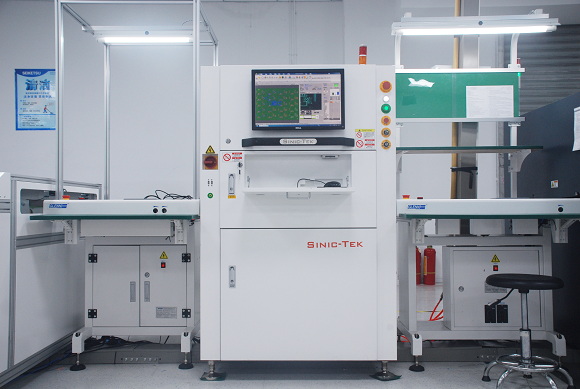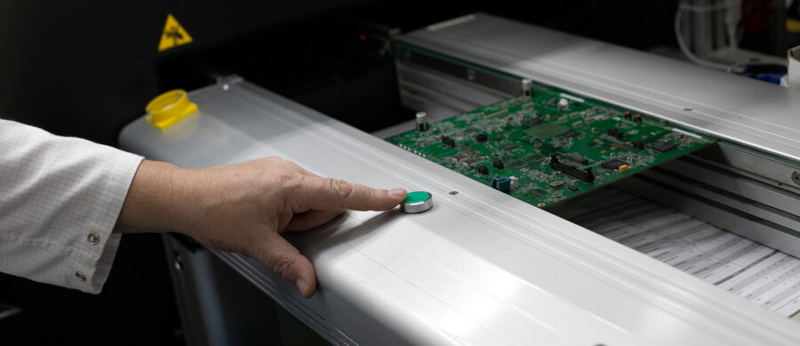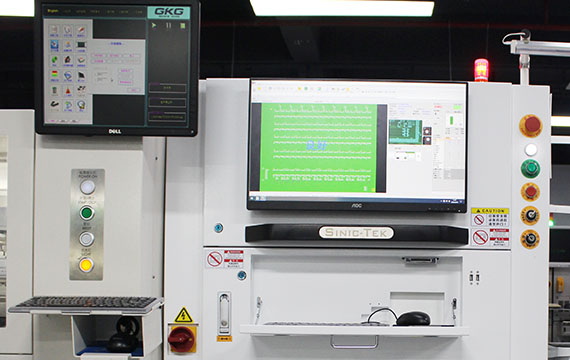Content Menu
● What is an SMD Assembling Machine?
● How SMD Assembling Machines Reduce Production Costs
>> 1. Increased Automation and Labor Cost Reduction
>> 2. Higher Production Speed and Throughput
>> 3. Improved Accuracy and Reduced Rework
>> 4. Ability to Handle Complex and High-Density Designs
>> 5. Reduced Material Waste
>> 6. Lower Setup and Changeover Times
>> 7. Enhanced Process Control and Data Analytics
● Cost Factors Associated with SMD Assembling Machines
>> Initial Investment
>> Operating and Maintenance Costs
>> Labor and Overhead
>> Material Costs
● Practical Considerations for Implementing SMD Assembling Machines
>> Production Volume
>> Design Complexity
>> Quality Requirements
>> Supplier and Equipment Selection
>> Integration with Other SMT Equipment
● Conclusion
● FAQ
>> 1. What is the main advantage of using an SMD assembling machine over manual assembly?
>> 2. How does an SMD assembling machine affect labor costs?
>> 3. Are SMD assembling machines suitable for small production runs?
>> 4. What types of components can an SMD assembling machine handle?
>> 5. What are the key cost factors to consider when investing in an SMD assembling machine?
In the rapidly evolving electronics manufacturing industry, cost efficiency is a critical factor for competitiveness and profitability. Surface Mount Device (SMD) assembling machines have become a cornerstone technology in modern printed circuit board (PCB) assembly, offering automation and precision that traditional methods cannot match. This article explores how an SMD assembling machine can help reduce production costs, examining the technology, its benefits, cost factors, and practical considerations for manufacturers.

What is an SMD Assembling Machine?
An SMD assembling machine, often referred to as a pick-and-place machine, is an automated device used to place surface mount components onto PCBs with high speed and accuracy. These machines are integral to Surface Mount Technology (SMT) assembly lines, which have largely replaced through-hole assembly methods due to their efficiency and suitability for miniaturized electronics.
The machine picks components from reels or trays and places them precisely on solder paste-applied pads on the PCB. After placement, the board undergoes reflow soldering to permanently attach the components. The automation of this process significantly reduces manual labor and increases throughput.
Modern SMD assembling machines come equipped with advanced vision systems, multi-nozzle heads, and intelligent software that optimize placement speed and accuracy. These features allow manufacturers to handle a wide variety of component sizes and shapes, from tiny 01005 resistors to large connectors, making the machines versatile for different product lines.
How SMD Assembling Machines Reduce Production Costs
1. Increased Automation and Labor Cost Reduction
One of the most direct ways SMD assembling machines reduce costs is by minimizing labor expenses. Manual placement of components is time-consuming and prone to errors, requiring skilled technicians and quality control personnel. Automated SMD machines can place thousands of components per hour with consistent accuracy, reducing the need for extensive manual labor and lowering labor costs substantially.
Automation also reduces human fatigue and errors, which can lead to costly rework or scrap. By shifting repetitive tasks to machines, companies can redeploy their workforce to higher-value activities such as process optimization and quality assurance.
2. Higher Production Speed and Throughput
SMD assembling machines operate at high speeds, enabling faster production cycles. This increased throughput means more units can be produced in less time, spreading fixed costs such as equipment depreciation and facility overhead over a larger number of units, effectively lowering the cost per unit.
For example, a high-end SMD assembling machine can place up to 100,000 components per hour, a rate impossible to achieve manually. This speed advantage is crucial for meeting tight delivery schedules and scaling production to meet market demand.
3. Improved Accuracy and Reduced Rework
Automated placement reduces component misalignment and soldering defects. The surface tension of molten solder during reflow helps correct minor misplacements, but precise placement by the machine minimizes the need for costly rework and scrap. This improvement in yield directly translates to cost savings.
Moreover, many SMD assembling machines integrate inline inspection systems such as Automated Optical Inspection (AOI) and 3D solder paste inspection, which detect defects early in the process. Early detection prevents defective boards from progressing further, saving material and labor costs associated with rework.
4. Ability to Handle Complex and High-Density Designs
Modern electronics demand compact, high-density PCBs with many small components. SMD assembling machines can handle these complex designs efficiently, which would be difficult and expensive to assemble manually. This capability allows manufacturers to produce advanced products without incurring prohibitive assembly costs.
The ability to place fine-pitch components, micro BGAs, and other advanced packages enables product miniaturization and enhanced functionality, which are essential in consumer electronics, medical devices, and automotive applications.
5. Reduced Material Waste
Automated machines optimize component usage and reduce errors that lead to wasted parts. Precise placement and controlled solder paste application minimize material waste, contributing to overall cost reduction.
Additionally, SMD assembling machines can be programmed to optimize feeder usage and component sequencing, reducing downtime and material handling errors. This efficiency reduces the risk of component damage and loss, further lowering material costs.
6. Lower Setup and Changeover Times
While initial setup costs for SMT assembly lines can be high, modern SMD assembling machines are designed for quick programming and changeovers. This flexibility reduces downtime between production runs and lowers setup costs per batch, especially beneficial for small to medium production volumes.
Advanced software tools allow for rapid import of CAD data and automated programming of placement sequences. Some machines support modular feeder systems and quick nozzle changes, enabling manufacturers to switch product lines with minimal disruption.
7. Enhanced Process Control and Data Analytics
Many modern SMD assembling machines come with integrated data collection and analytics capabilities. Real-time monitoring of placement accuracy, machine performance, and component usage helps manufacturers identify bottlenecks and optimize processes.
This data-driven approach leads to continuous improvement, reducing waste and improving yield over time, which contributes to long-term cost savings.

Cost Factors Associated with SMD Assembling Machines
Initial Investment
The purchase price of an SMD assembling machine can range from tens of thousands to several hundred thousand dollars depending on its capabilities, speed, and precision. This upfront cost is significant but can be amortized over large production volumes.
Choosing the right machine involves balancing cost with required features. For example, a high-speed, multi-head machine with advanced vision systems will cost more but deliver greater efficiency and flexibility.
Operating and Maintenance Costs
Operating costs include electricity, maintenance, and consumables like nozzles and feeders. Regular maintenance is essential to keep machines running efficiently and avoid costly breakdowns.
Consumables such as placement nozzles wear out over time and must be replaced periodically. Preventive maintenance schedules and operator training can reduce downtime and extend machine life.
Labor and Overhead
Although labor costs decrease with automation, skilled operators and technicians are still required for machine setup, programming, and quality control. Overhead costs such as facility rent and utilities also factor into total production costs.
Investing in operator training ensures efficient machine use and reduces errors, maximizing the return on investment.
Material Costs
The cost of PCBs and components remains a major part of total assembly cost. However, SMD assembling machines enable the use of smaller, less expensive components and reduce the need for through-hole parts, which can be costlier.
Additionally, the precision of automated placement reduces component damage and waste, lowering material costs.
Practical Considerations for Implementing SMD Assembling Machines
Production Volume
SMD assembling machines are most cost-effective for medium to high production volumes. For very small batches, setup costs may outweigh savings, but for large runs, automation significantly reduces per-unit costs.
Manufacturers with fluctuating production volumes may consider modular or scalable machines that can adapt to changing needs.
Design Complexity
Boards with high component density and fine-pitch components benefit most from automated assembly. Simpler designs may not justify the investment in high-end machines.
Design for manufacturability (DFM) principles should be applied to optimize PCB layouts for automated assembly, further reducing costs.
Quality Requirements
High-reliability products require precise assembly and testing. SMD machines improve consistency and enable integration with automated inspection systems, supporting stringent quality standards.
Industries such as aerospace, medical, and automotive often mandate strict quality controls that automated assembly can help meet.
Supplier and Equipment Selection
Choosing the right machine involves balancing cost, speed, accuracy, and support services. Some manufacturers offer modular machines that can be upgraded as production needs grow.
Evaluating vendor reputation, after-sales support, and training services is critical to ensure smooth implementation and long-term success.
Integration with Other SMT Equipment
An SMD assembling machine is one part of the SMT production line. Integration with solder paste printers, reflow ovens, and inspection systems is essential for a streamlined process.
Automated material handling and conveyor systems can further reduce labor and improve throughput.
Conclusion
An SMD assembling machine can significantly reduce production costs by automating the placement of surface mount components, increasing production speed, improving accuracy, and enabling complex PCB designs. While the initial investment and operating costs are considerable, the long-term savings in labor, material waste, and rework make these machines indispensable for modern electronics manufacturing. For manufacturers aiming to enhance efficiency and competitiveness, investing in SMD assembling technology is a strategic decision that pays off in cost reduction and product quality.

FAQ
1. What is the main advantage of using an SMD assembling machine over manual assembly?
The main advantage is automation, which leads to faster production, higher accuracy, reduced labor costs, and lower defect rates compared to manual assembly.
2. How does an SMD assembling machine affect labor costs?
It significantly reduces labor costs by automating component placement, requiring fewer operators and less manual intervention during assembly.
3. Are SMD assembling machines suitable for small production runs?
While they are most cost-effective for medium to large volumes, some modern machines offer quick setup and flexibility that can accommodate smaller runs with reasonable cost efficiency.
4. What types of components can an SMD assembling machine handle?
These machines can place a wide range of surface mount components, including resistors, capacitors, ICs, and fine-pitch devices, on both sides of the PCB.
5. What are the key cost factors to consider when investing in an SMD assembling machine?
Key factors include the initial purchase price, operating and maintenance costs, labor and overhead expenses, and the expected production volume to amortize the investment effectively.




















